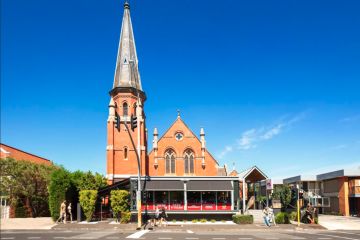Canberra still most affordable for housing but larger share of income spent on rent: report
The ACT is still the most affordable jurisdiction for housing in Australia, according to new data.
But the Real Estate Institute of Australia and Adelaide Bank’s Housing Affordability Report for the December 2016 quarter, released on Wednesday, reveals Canberra tenants are forking out a larger slice of income on rent.
Canberra homeowners are spending an average 19.7 per cent of their income on home loan repayments, the smallest proportion recorded across Australia as of December 2016.
It’s a slight dip of 0.2 percentage points compared to the same period 12 months earlier. However, home ownership has grown slightly more expensive compared to the September quarter, by 0.6 percentage points.
Nationally, housing affordability worsened by 0.9 percentage points over the quarter, with the average Australian spending 30.4 per cent of their income on loan repayments.
But affordability has improved year on year, by 1.9 percentage points since December 2015.
The national capital’s median weekly family income of $2608 is higher than anywhere else in Australia and about $1000 more than the national average.
The average loan size in Canberra is $390,668, an increase of 2.5 per cent compared to the December 2015 quarter.
Real Estate Institute of Australia president Malcolm Gunning said low interest rates and modest rises in income across Australia had not offset the increasing size of mortgages.
He said this had lead to a rise in the proportion of family income required to meet average monthly loan repayments over the quarter.
“Over the December quarter, affordability declined in all states, with New South Wales the least affordable,” he said.
Renting Canberra property has also become less affordable, according to the data.
The average tenant is spending 17.6 per cent of their income on rent; an increase of 0.8 percentage points over the 12 months to December.
Domain Group data paints a similar picture of housing affordability in the ACT.
The latest housing loan repayment affordability index, based on ABS data, places Canberra at 86.3 as of December.
It shows affordability has improved over a 12-month period, from a December 2015 index of close to 90, and is well below a 10-year average index of 100.
Domain chief economist Andrew Wilson said there had been a drop in affordability over the quarter however, this was “no surprise” given the December property market’s strong finish.
He attributed the quarterly result to increasing property prices in Canberra.
“Income growth is very low at the moment,” he said. “It doesn’t take much to create an increase.”
He expected a similar result over the March quarter, largely thanks to the Canberra auction market’s strongest February on record, including a monthly clearance rate of 74.1 per cent.
Dr Wilson said the Canberra market had been “reasonably conservative in terms of lending”, despite having more income leverage than other jurisdictions.
The number of loans in the ACT was 2322 as of December, up 18.6 per cent over the quarter but down 1.1 per cent year on year, according to the Housing Industry Association report.
The report also shows there are less first home buyers in the Canberra market, in line with a national fall.
The number of loans given to first home buyers as of December was 466; 3.7 per cent less than the number of loans handed out 12 months earlier, but 12 per cent more than the previous quarter.
First home buyers make up 14.5 per cent of the ACT’s owner-occupier market.
We recommend
We thought you might like
States
Capital Cities
Capital Cities - Rentals
Popular Areas
Allhomes
More









